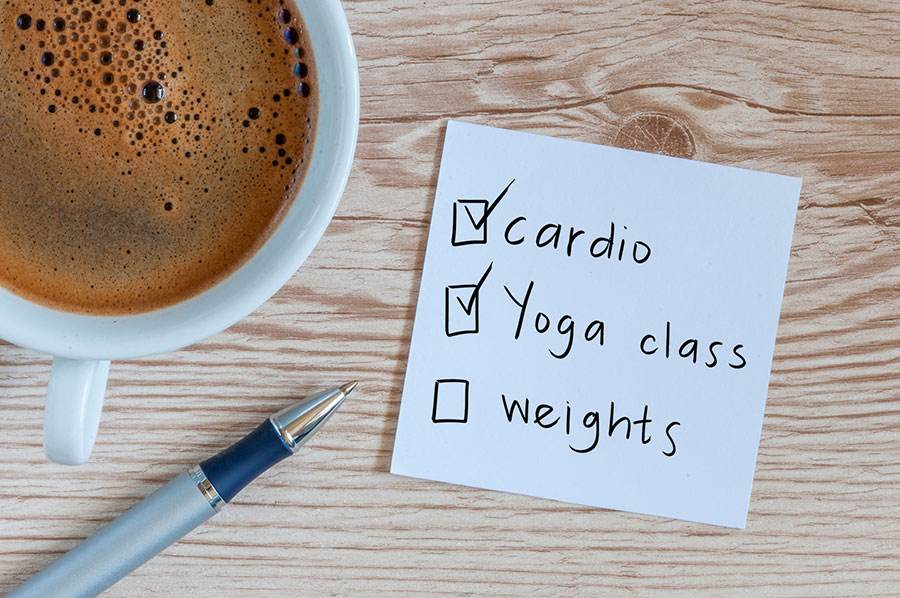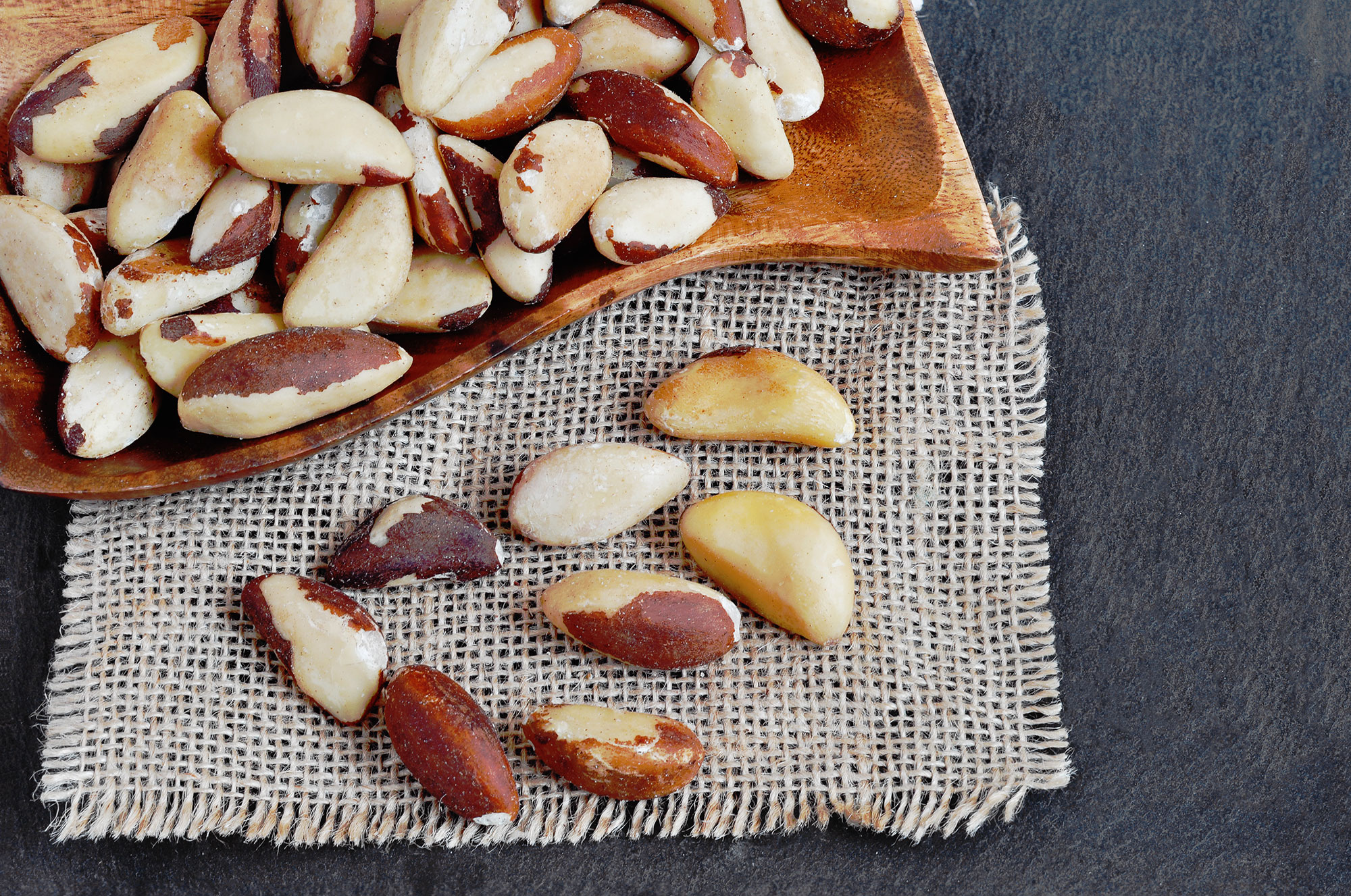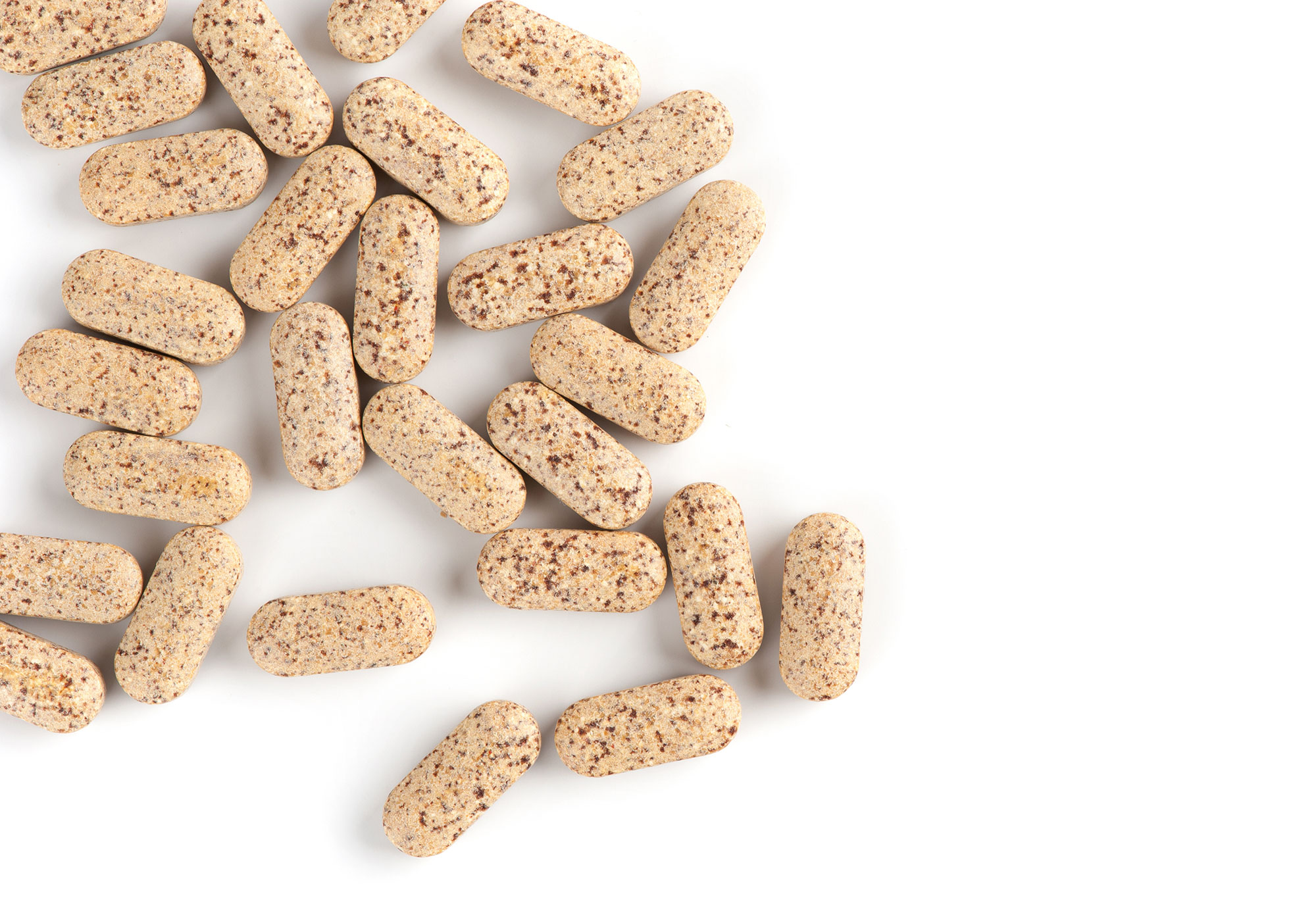Why am I Gaining Weight Despite Diet and Exercise? │ QA
If you’re careful with your nutrition, working out weekly, and still experiencing problems with your weight, take a moment to read this QA.


Is it OK to eat/drink an apple/coffee 1 hour before working out?
– Pavan

Yes, an apple and cup of coffee are okay to eat/drink an hour before working out.
If your workout is intense and prolonged, you may want to supplement a little protein with the apple or a light workout drink during exercise. Alternatively, if you’ve eaten a LARGE meal within 3 hours prior to your workout, you can skip your described snack.
– Debbie J., MS, RD

This article should not replace any exercise program or restrictions, any dietary supplements or restrictions, or any other medical recommendations from your primary care physician. Before starting any exercise program or diet, make sure it is approved by your doctor.
Some questions have been edited for length and/or clarity.
 Have a nutrition question? Our registered dietitian is ready to help!
Have a nutrition question? Our registered dietitian is ready to help!
Email nutrition@lafitness.com or submit your question below and it may be featured in an upcoming article!
If you’re careful with your nutrition, working out weekly, and still experiencing problems with your weight, take a moment to read this QA.
Blood sugar control isn’t easy. These are Debbie’s top recommendations for how to address weight control with Type II Diabetes.
Does Intermittent Fasting give you enough time to pack the day's protein? Our registered dietitian helps clear up the confusion!


For people who are barely starting to exercise, what would you recommend on a planned diet? I am over 180 pounds and I see and read diet plans. But as a person who is starting to exercise I was curious if there are any recommendations for diet plans. I know this will all depend on maybe a personal assessment but I just wanted to ask.
– Esme

Welcome to the LA Fitness family, Esme! It’s great that you began exercising and want to add in a planned diet. It’s okay to focus on your new exercise routine for a while and once you’ve got that established, then address your nutrition.
What I’d specifically recommend really all depends on what your diet is like now. You should start with assessing your current diet to see where you can improve. Keep a food diary for a few days and enter it into a dietary analysis program, app or website that will show the average calories, fat breakdown, protein, carbohydrate breakdown, and vitamins/minerals you consume.
If there are areas you know need to change, and you can practically address those, start there. You’ll have greater long-term success by amending how you eat rather than adopting a rigid, generic plan that doesn’t take into account your preferences and lifestyle. See our previous article “The 3 Pronged Attack for Weight Loss – DIET.”
That said, you may want to look at some key targets of a healthful nutrition plan:

Readers, are there other GENERAL tips that worked for you when starting out that you’d like to share? Enter them in the comments area below!
– Debbie J., MS, RD
This article should not replace any exercise program or restrictions, any dietary supplements or restrictions, or any other medical recommendations from your primary care physician. Before starting any exercise program or diet, make sure it is approved by your doctor.
Some questions have been edited for length and/or clarity.
 Have a nutrition question? Our registered dietitian is ready to help!
Have a nutrition question? Our registered dietitian is ready to help!
Email nutrition@lafitness.com or submit your question below and it may be featured in an upcoming article!
If you’re careful with your nutrition, working out weekly, and still experiencing problems with your weight, take a moment to read this QA.
Blood sugar control isn’t easy. These are Debbie’s top recommendations for how to address weight control with Type II Diabetes.
Does Intermittent Fasting give you enough time to pack the day's protein? Our registered dietitian helps clear up the confusion!


What is a good alternative to grains as a way to complement the protein in legumes? Legumes are nutrient dense in many ways, including protein. But legume protein is low in methionine, an amino acid that our bodies cannot make. For this reason legumes have traditionally been combined with grains, which are high in methionine. Grains are low in another amino acid our bodies cannot make, lysine. Legumes are high in lysine. For this reason, legume and grain proteins are said to be complimentary. But if I am considering a long term dietary shift away from grains, I cannot be reassured by that. We still need to combine our proteins well over the course of several days. Unfortunately, grains are not a nutrient dense food. They are very high in starch and low in phytonutrients. So, what are some nutrient dense sources of methionine and cysteine? Or, in simpler terms, what is a good alternative to grains as a way to compliment legume protein?
– Benjamin H.

Vegan diets do tend to be low in methionine1, one of the essential amino acids. Interestingly enough, it’s actually proposed that a lower methionine intake is better for longevity1.
The World Health Organization recommends the adult dietary requirement is 10.4 mg of methionine per kg body weight per day to cover obligatory oxidative loses2. Whereas the US Recommended Dietary Allowances combine the methionine requirement with cysteine (a non-essential amino acid) for a total of 19 mg combined of methionine and cysteine/kg/day3. In plant foods, there are about equal amounts of methionine and cysteine.
“Wheat and rice proteins are comparatively low in lysine but better sources of methionine whereas beans and peas are relatively high in lysine yet in lower methionine.” — www.vegsoc.org/protein
Here are selected non-grain plant foods highest in methionine, given in common portions/(gram weight) with corresponding protein content4:
Brazil nuts, dried
Soybeans, boiled
Chia seeds, dried
White beans, canned
Sunflower seed kernels, dry roasted
Russet potato, baked w/ skin
Chickpeas/Garbanzo, canned
Peanuts, Spanish
Red potato, baked w/ skin
Spinach, cooked
Coconut milk, canned
Peaches, dried
Turnip greens, cooked from frozen
Corn kernels, cooked from frozen
Avocado, California
Spinach, boiled
Brown mushrooms, raw
Broccoli, cooked chopped
Raw seaweed spirulina
Asparagus, cooked
Zucchini
Cauliflower
Spinach, raw
373 mg in ¼ C (33g)
192 mg in ½ C (86g)
167 mg in 1 oz (28 g)
143 mg in ½ C (131g)
134 mg in ¼ C (32g)
123 mg in large 3-4” (299g)
118 mg in ½ C (127g)
117 mg in ¼ C (36g)
105 mg in large 3-4” (299g)
99 mg in 1 C (180g)
86 mg in 1 C (226g)
70 mg in ½ C (80g)
62 mg in ½ C (82g)
59 mg in ½ C (70g)
48 mg in 1 fruit (130g)
49 mg in ½ C (90g)
42mg in 1 C (87g)
34 mg in ½ C (78g)
33 mg in 1 oz (28 g)
31 mg in ½ C (90g)
18 mg in ½ C (116mg)
16 mg in ½ C (62g)
16 mg in 1 C (30g)
4.75 g protein
15.5 g protein
4.5 g protein
9.5 g protein
6 g protein
8 g protein
9 g protein
9.5 g protein
7 g protein
5 g protein
4.5 g protein
3 g protein
2.5 g protein
2.5 g protein
2.5 g protein
2.75 g protein
2 g protein
2 g protein
2 g protein
2 g protein
1 g protein
1 g protein
1 g protein
Our vegetarian audience may also be interested in a thorough discussion at http://www.veganhealth.org/articles/protein and some of our previous articles below for protein information.
References:
– Debbie J., MS, RD
This article should not replace any exercise program or restrictions, any dietary supplements or restrictions, or any other medical recommendations from your primary care physician. Before starting any exercise program or diet, make sure it is approved by your doctor.
Some questions have been edited for length and/or clarity.
 Have a nutrition question? Our registered dietitian is ready to help!
Have a nutrition question? Our registered dietitian is ready to help!
Email nutrition@lafitness.com or submit your question below and it may be featured in an upcoming article!
If you’re careful with your nutrition, working out weekly, and still experiencing problems with your weight, take a moment to read this QA.
Blood sugar control isn’t easy. These are Debbie’s top recommendations for how to address weight control with Type II Diabetes.
Does Intermittent Fasting give you enough time to pack the day's protein? Our registered dietitian helps clear up the confusion!


I have heard much talk on the internet about the need for serious bodybuilders to take in nutrition steadily, especially protein. It is claimed that muscle growth slows and reverses at night after digestion completes and the body starts catabolizing for energy. Many suggest using a slow-digesting protein such as casein at night to feed muscles protein constantly and ward off catabolism. Is this shown to be effective? If so, are there any other ways to reduce catabolism at night?
– David G.

You posed a unique question, David! The body’s skeletal muscle not only dictates much of our circadian rhythm but also follows a day/night routine for repair and building. Research shows that muscle impacts the gene activity that regulates the utilization and storage of substrates (the macronutrients carbohydrate, fat, and protein)1. In other words, the skeletal muscle itself affects catabolic and anabolic processes over a 24-hour period, though this effect is not well understood.
Regardless of the time on the clock, you need to consume macronutrients post-exercise to promote positive muscle-protein balance. For evening exercisers, a recovery meal or shake becomes key before fasting overnight during sleep2. Over 6-8 hours, slower-digesting proteins have a similar effect on muscle protein synthesis as fast-digesting proteins do in the first 3 hours. So grandma was right about having a glass of warm milk before bed, as milk is 80% casein.
What about supplements/amino acids? Though certain essential amino acids stimulate muscle protein synthesis more than others, intact protein may result in a greater positive balance. This is partly because whole foods result in a greater insulin secretion. Muscles are highly insulin-sensitive for nutrient uptake and storage3. In summary, a meal containing protein is better than a straight supplement in the evening.
References
.
– Debbie J., MS, RD
This article should not replace any exercise program or restrictions, any dietary supplements or restrictions, or any other medical recommendations from your primary care physician. Before starting any exercise program or diet, make sure it is approved by your doctor.
Some questions have been edited for length and/or clarity.
 Have a nutrition question? Our registered dietitian is ready to help!
Have a nutrition question? Our registered dietitian is ready to help!
Email nutrition@lafitness.com or submit your question below and it may be featured in an upcoming article!
If you’re careful with your nutrition, working out weekly, and still experiencing problems with your weight, take a moment to read this QA.
Blood sugar control isn’t easy. These are Debbie’s top recommendations for how to address weight control with Type II Diabetes.
Does Intermittent Fasting give you enough time to pack the day's protein? Our registered dietitian helps clear up the confusion!


I am so confused about reading so much information on which multivitamin to take or not to take. Is there a multivitamin that you would recommend for a woman 50+ years older? I am in menopause and did look at a vitamin for women 50+ and older.
– Mary F.

I agree – there are so many brands for so many concerns! Age is one factor to consider. Diseases you’re at risk for are another aspect. What micronutrients* might be lacking in your diet is another. Menopausal women should focus on adequate B-complex vitamins, Vitamin D3, and magnesium. If you eat well, it’s possible you get enough of these from natural sources and fortified foods daily. But if you just want to cover the bases as an insurance, then a multivitamin/mineral that includes these would be fine. If your diet is all over the place with no consistency and poor nutrient quality, I’d go for a higher potency multivitamin/mineral. And if you’re taking other supplements that include vitamins or minerals (such as a calcium-enriched protein drink), you may want to adjust how much of those nutrients to target from your multi.
No matter the brand, I’d recommend splitting the tablets between morning and night for optimal utilization. More constant delivery best mimics how your body uses micronutrients throughout the day. It would also be the most cost-effectiven use of your supplement so you’re not losing (in urine) what you’ve paid for. I’d choose one with a USP Verified mark, which indicates the company has followed good manufacturing processes to ensure their product contains the micronutrient levels stated on the package.
*Phytonutrients, probiotics, coenzyme Q10 and omega-3s are not vitamins or minerals, and can be supplemented separately.
– Debbie J., MS, RD
This article should not replace any exercise program or restrictions, any dietary supplements or restrictions, or any other medical recommendations from your primary care physician. Before starting any exercise program or diet, make sure it is approved by your doctor.
Some questions have been edited for length and/or clarity.
 Have a nutrition question? Our registered dietitian is ready to help!
Have a nutrition question? Our registered dietitian is ready to help!
Email nutrition@lafitness.com or submit your question below and it may be featured in an upcoming article!
If you’re careful with your nutrition, working out weekly, and still experiencing problems with your weight, take a moment to read this QA.
Blood sugar control isn’t easy. These are Debbie’s top recommendations for how to address weight control with Type II Diabetes.
Does Intermittent Fasting give you enough time to pack the day's protein? Our registered dietitian helps clear up the confusion!
Be the first to know about exclusive
content, deals and promotions